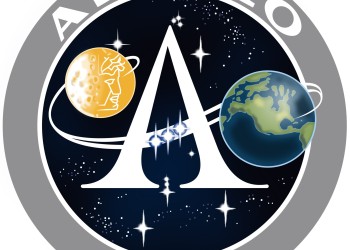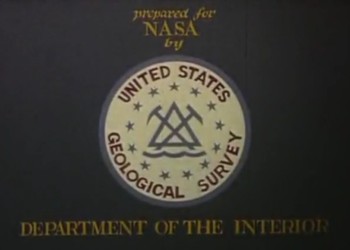Cinder Lakes Apollo Training Area
No, forest visitors at this specific site haven't landed on the moon... but close!
In order to prepare Apollo astronauts for their moon landings, the National Aeronautics and Space Administration (NASA) worked with the Forest Service, the United States Geological Survey (USGS), the Flagstaff-based Lowell Observatory and a number of other agencies to create a training ground that would mimic the surface of the moon.
While the Cinder Lakes Apollo Training Area is no longer used to train astronauts, it is still open and maintained.
Site History
Located in what is now known as the Cinder Hills Off-Highway Vehicle (OHV) Area just northeast of Flagstaff are the remnants of the Cinder Lakes Crater Fields (Field #1 and Field #2) that were designed and constructed in July 1967 for astronaut training.
Craters range in diameter from 5 to 40 feet and the first phase of the field, which consisted of 47 craters, occurred July 28-31, 1967. The field was expanded in October 8-12, 1967, which added 96 craters (or 143 total). The cinder field is made up of debris that erupted from Sunset Crater in approximately 1064 A.D.
Cinder Lake Crater Field #1
Crater Field #1 was specifically designed to duplicate an area within the Mare Tranquillitatis in an effort to train astronauts for the future Apollo mission. It was produced in two stages and was 500 x 500 feet. Part of the first stage of the field creation was designed to simulate a small area of the Apollo 11 landing site that was observed in a Lunar Orbiter image. A simulated Lunar Module was installed on a ramp within the crater field for context of where the height of the Apollo ascent windows would be. Astronauts tested mobility systems such as the "Explorer" vehicle and an experimental vehicle called "Grover," which was used to training the Apollo prime and back-up crews.
Cinder Lake Crater Field #2
The second crater field is located in an area that is used quite frequently by OHV enthusiasts, where basaltic cinders cover clay beds, and thus a light-colored clay was excavated by the blasts and produced distinctive markings. Field #2 is 1,200 x 1,200 feet and contains 354 craters, which required 1,153 pounds of dynamite, 28,650 pounds of nitro-Carbo nitrate, and 40,000 ft of Primacord. Several sets of explosions were detonated to create the field and designed to overlap, which simulated lunar impact craters of intermediate age.
Creating Cinder Lakes
In order to create the crater field, crews excavated holes and filled them with 312.5 pounds of dynamite and 13,492 pounds of ammonium nitrate. Test explosions were used to calibrate the amount of explosive needed to generate craters of specific sizes.
Training at Cinder Lakes
Following the creation of Cinder Lakes, Apollo astronauts used the facility for training.
The crater fields were suitable for testing rover prototypes and also used to test procedures for determining location within a cratered lunar landscape.
Crews tested their ability to describe crater morphologies and stratigraphic relationships in unconsolidated materials as well as how to use hand tools and test deployment methods for prototype scientific experiment packages.
Recent and Ongoing Restoration Work
In 2024, the Coconino National Forest began the process of clearing out overgrown brush and trees located within the Cinder Lakes training area in an effort to return the site to its 1967 appearance. Forest archaeologists and timber staff used historical photos and documents to guide thinning work, which was contracted out through a collaboration with the National Forest Foundation.
Because heavy equipment is not allowed on-site, crews used chainsaws and hand tools to clear out overgrown ponderosa pine and juniper trees, which were hand-carried out of the project area and donated to the Wood for Life program.
Other Resources
Apollo Missions

You can read about NASA's Apollo missions here.
Our Lunar Legacy at Lowell Observatory

The Flagstaff-based Lowell Observatory created an online exhibit to explore Lowell Observatory's role in preparing for the Apollo missions.
View the Mare Tranquillitatis Video!




















